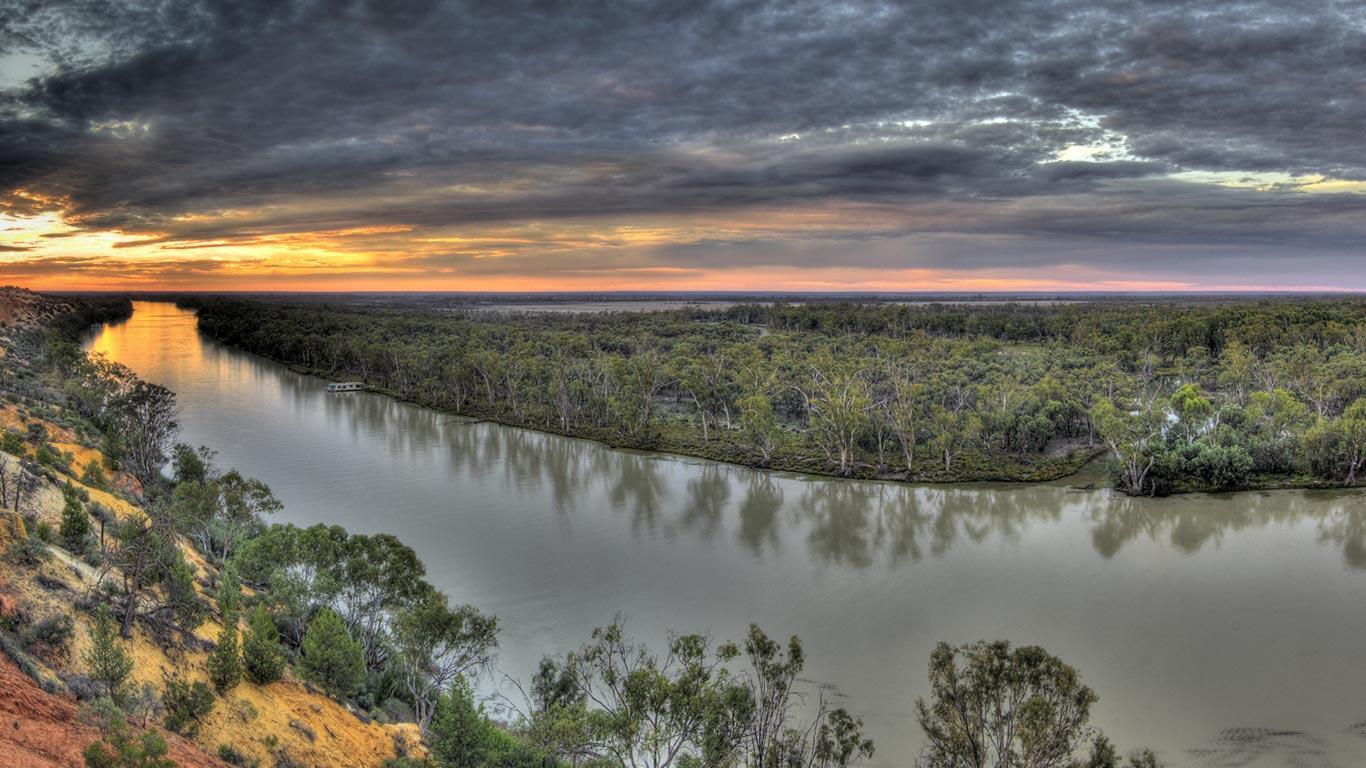24 November 2023
Insight from: Robbie Sefton
The Murray-Darling Basin is one of the most agriculturally, environmentally and culturally significant systems in Australia, but unfortunately it’s also one of the most fraught when it comes to its management and the competing interests that underpin policy priorities and decisions.
I grew up on an irrigation farm in Deniliquin and now own a dryland farm near Tamworth, both in the Murray-Darling Basin. I also had the privilege of chairing the Independent Panel for the Assessment of Social and Economic Conditions in the Murray–Darling Basin from 2019 to 2020 and travelled extensively right across its vast area. So, I can appreciate just how critical it is - not only for Basin communities, but for the nation as a whole – to get the management of it right.
The protests this week in Deniliquin, Leeton and Griffith – which attracted large crowds - around the prospect of another round of water buybacks underlines just how at odds stakeholders and governments are when it comes to the vision for this area, and just how far away we remain from outcomes that will satisfy the agricultural and environmental returns from this mighty river system.
Buybacks have occurred in the past with what can only be described as mixed results. At the time the Panel travelled across the Basin consulting with communities, buybacks were overwhelmingly seen as the least desirable form of water recovery due to the long-term loss of economic resources and increased exposure to risks not offset by other compensatory gains.
This week’s protests are expressing that ‘oh no, not again’ sentiment, with many recalling the pain of the last round of buybacks after which they saw job losses, business closures and a fall in population as residents were forced to leave. They feel they haven’t been adequately consulted, and this time, the buyback proposal comes on top of increasing cost of living pressures, fuelling the anger and frustration of many.
There’s no doubting buybacks are the easiest form – from the government perspective – of water recovery. There’s no denying the prospect of guaranteed cash in the bank will be attractive to some water licence holders, particularly in regions where the threat of drier times loom. But what they fail to do is take into account the bigger picture related to reduced agricultural production and the flow-on effect to the communities reliant on this industry. And this doesn’t just impact individual communities, it impacts Australia and its economy as a whole.
Buyback opponents describe it as a blunt instrument for achieving greater environmental flows, ignoring alternative measures that support both environmental and economic goals. The National Farmers’ Federation said in July that it had collaborated with Basin representative groups to identify numerous proposals that would deliver the Murray-Darling Basin Plan objectives without resorting to buybacks. These projects included precision water management technologies and new water storage solutions, and there was also support for the funding of measures like carp eradication and bank restoration to directly boost environmental recovery.
The message is, with such an important, fragile and complex system, the ‘easy’ way is not necessarily the right way. It will take more innovative and ‘out-of-the-box’ solutions to get the job done, and preserve the integrity of the communities that have supported this system for generations. There’s also the question of economic value and whether buybacks stand up financially. One expert I have heard from in this field suggests the current round of buybacks will cost more than $7 billion, and only achieve 2.5% more water than the Murray-Darling Basin’s environmental flows have already. Could that money not be better spent in line with our Panel’s recommendations back in 2020 that called for greater investment in regional communities in ways that stimulated long-term economic growth and activity through economic diversification and improved infrastructure and services?
The final point to make though is that amid the protests and anger, these communities want to find a way forward that satisfies all the interests in the Basin. When our Panel travelled through the Basin, we found communities who remained open to supporting water reform, recognising the importance of enhanced environmental outcomes in maintaining healthy rivers and improving conditions for everyone who calls the Basin home.
What we heard though, was that they needed confidence that the Murray-Darling Basin Plan was fair and equitable for all, and that they were being listened to by policy-makers. It’s not too much to ask when so much is at stake for so many.
Robbie is a wool and crop producer from Tamworth, NSW. She is the founder and Managing Director of Seftons. Robbie chaired the Independent Assessment of the Social and Economic Conditions in the Murray Darling Basin.
https://www.dcceew.gov.au/sites/default/files/documents/panel-report.pdf




